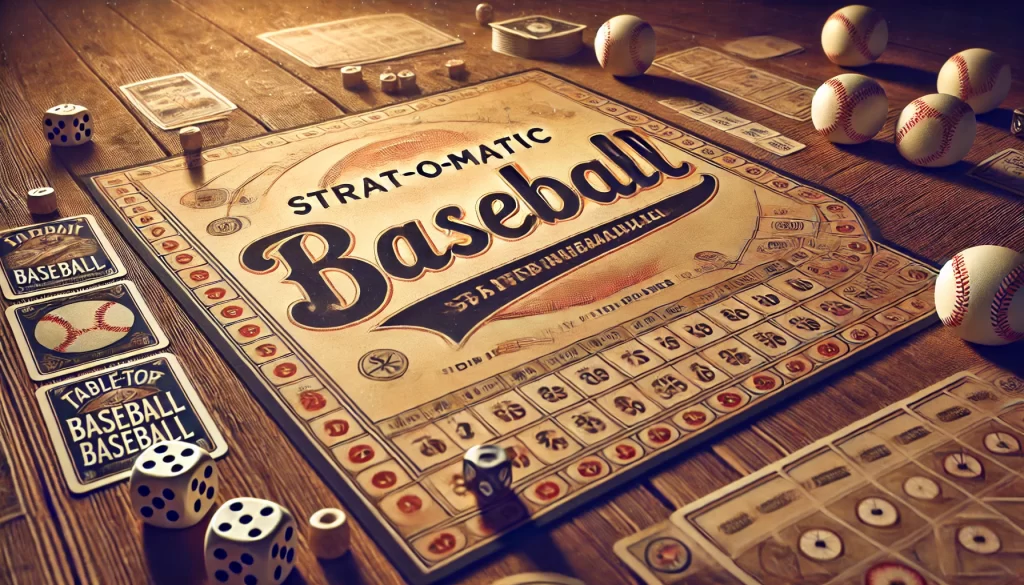The Brilliance and Accuracy of Strat-o-Matic: A Closer Look
The simplicity of Strat-o-Matic is its brilliance. You roll the dice and get about 99% accuracy—or fairly close to that. I’m truncating, of course, but Strat-o-Matic is very accurate. While no baseball game can perfectly replicate a season’s statistics in a one-to-one manner, Strat-o-Matic does an excellent job of providing a realistic statistical experience.
A baseball simulation’s goal is to create a system that maximizes realism based on existing statistics. It should eliminate errors in mechanics and flaws in game design that could compromise accuracy. From the outside looking in, Strat-o-Matic seems airtight. Statistically, I considered it highly accurate—until this year. Here’s why.
Understanding Strat-o-Matic’s Two-Card System
Strat-o-Matic uses a two-card system—one for the pitcher and one for the batter. This makes it relatively easy to reverse-engineer the statistical formulas used to create each card. However, you can’t simply place a batter’s raw statistics directly onto their card. If you match a batter’s raw statistics against an “average” pitcher, it would significantly skew the outcomes. Let me explain.
Suppose that during a Major League Baseball season, the league-wide batting average is .260. Now, let’s take a batter who hits .330. If we were to directly place his statistics on a batter’s card, he would hit .330 when his card was used and .260 when using the pitcher’s card. Averaging the two, he would end up with a .295 batting average instead of .330—a serious flaw in game mechanics.
Strat-o-Matic doesn’t make this mistake, though. To ensure the batter reaches .330, his card needs to reflect a .400 batting average. This may seem excessive, but when you combine a .400 batting average from the batter’s card with the .260 league average from pitcher cards, the end result is a .330 average. The key takeaway: all statistics must be adjusted relative to the league average and then doubled in distance.
Making Strat-o-Matic Slightly More Accuracy
Strat-o-Matic is highly accurate, but it overlooks a crucial factor: how to handle statistical categories where a player is an extreme outlier—so extreme that the required statistical adjustment would be negative.
How can you have a negative statistic, and why does this matter?
Let’s say the average Major League player hits 12 home runs per 600 plate appearances. Now consider a batter who hits just one home run in 600 plate appearances. Theoretically, you might think this is simple—just create a batter’s card reflecting that percentage. But baseball mathematics doesn’t work like that.
If pitcher cards average 12 home runs per 600 plate appearances, and the batter’s card reflects one home run per 600 plate appearances, then on average, the batter will hit about 6.5 home runs per 600 plate appearances instead of just one. Clearly, this is a problem.
To ensure the batter only hits one home run per 600 plate appearances, his card would need to effectively generate a negative number—something like -10 home runs per 600 plate appearances:
- Pitchers’ cards: 12 home runs per 600 PA
- Batter’s card: -10 home runs per 600 PA
Total: 2 home runs per 1,200 PA, or 1 home run per 600 PA—which would be accurate.
Addressing the Outlier Issue
This issue isn’t limited to home runs. It affects triples, walks, strikeouts, and any other category where a player is an extreme outlier. If a player’s performance in a category is significantly below the league average, a game like Strat-o-Matic needs a way to apply negative adjustments to their outcomes.
So, how do we fix this?
A Potential Solution
Let’s revisit our example: a player with one home run in 600 plate appearances. If Strat-o-Matic treated this correctly, his card would need an effective minus-5 home run adjustment. While you could give him zero home runs on his card, the real fix is to apply a modifier to pitcher cards when he’s at bat.
One way to achieve this would be to introduce an asterisk or special marker on various outcomes—such as strikeouts, walks, and hits. If a player like Manny Garbanzo has a minus-5 home run rating, any home run result on a pitcher’s card could have its range adjusted accordingly. For example:
- Suppose a home run result is 1–20 on a roll in Strat-o-Matic.
- With Manny’s minus-5 adjustment, it would instead become 1–15 (HR) and 16–20 (out).
This would effectively reduce his home run total while keeping the overall game mechanics intact.
Final Thoughts
I’m not trying to overhaul Strat-o-Matic, but rather illustrate that small adjustments could improve its accuracy—particularly in handling statistical outliers. I don’t know if anyone has developed a homebrew system for this issue, but I believe a tweak like this could bring Strat-o-Matic closer to statistical perfection.
At the end of the day, the goal isn’t to rewrite the game’s mechanics but to ensure it remains as accurate as possible while keeping the gameplay smooth and enjoyable. After all, Strat-o-Matic launched me into a world of mathematics and statistics that changed my life forever, and for that, I will always love it.
Retired editor and small business owner; baseball fanatic. My love for statistics in math was launched in my early teens while compiling and analyzing statistics from Strat-o-Matic baseball. Currently working on my first game - High Leverage Baseball - as part of a startup gaming company called Massive Tension Gaming.
- Steve Shawhttps://sabrbaseballgaming.com/author/bhud/
- Steve Shawhttps://sabrbaseballgaming.com/author/bhud/





Yes, this is why they added the N/W power ratings to the Advanced/Super Advanced version of the game, but it still suffers from this “50/50 problem” for other stats like walks and strikeouts. (Joe Sewell, Nellie Fox and Dennis Eckersley are problematic.) I feel for SOM and APBA a bit, in that they are victims of their own success – they have a 50+ year fanbase and tradition which they have to honor, and this results in them having to bolt new things onto their existing framework rather than being able to engineer this sort of stuff in from the start.
Yeah I mean all things considered it is going to be 99% realistic. It tends to fall apart in most cases for individuals that don’t have many at bats or Innings pitched, but when you get into the territory of truly freaky seasons they can be definitely hard to replicate.
Great post and explanation!
Thanks Bob I appreciate that